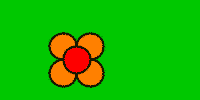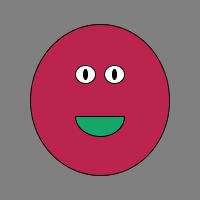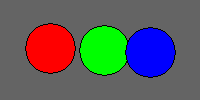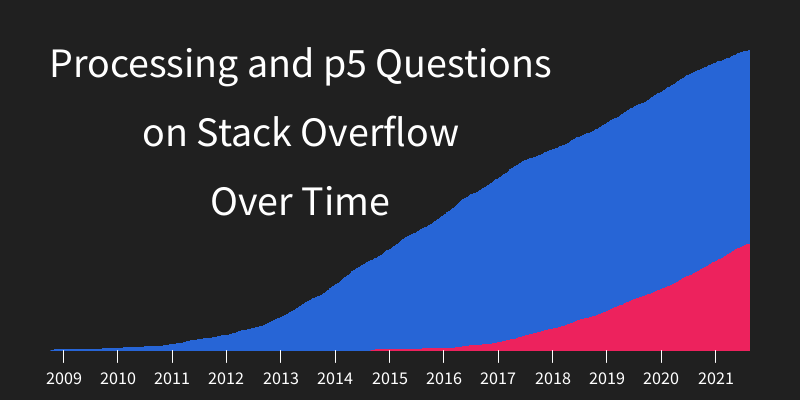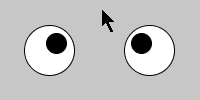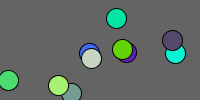Flocking
Flocking
This program uses a Flocker class to encapsulate all of the logic for creating a flocking simulation. Each individual Flocker follows simple rules: it finds the closest other Flocker, and then turns towards it.
To understand this better, let’s start out with only two Flocker instances:
Flocker[] flock = new Flocker[2];
void setup() {
size(200, 200);
for (int i = 0; i < flock.length; i++) {
flock[i] = new Flocker();
}
}
void draw() {
background(200);
for (int i = 0; i < flock.length; i++) {
flock[i].step();
flock[i].draw();
}
}
class Flocker {
float x = random(width);
float y = random(height);
float heading = random(TWO_PI);
float speed = random(1, 3);
float radius = random(10, 20);
void step() {
//find the closest Flocker
float closestDistance = 100000;
Flocker closestFlocker = null;
for (int i = 0; i < flock.length; i++) {
//make sure not to check against yourself
if (flock[i] != this) {
float distance = dist(x, y, flock[i].x, flock[i].y);
if (distance < closestDistance) {
closestDistance = distance;
closestFlocker = flock[i];
}
}
}
float angleToClosest = atan2(closestFlocker.y-y, closestFlocker.x-x);
//prevent case where heading is 350 and angleToClosest is 10
if (heading-angleToClosest > PI) {
angleToClosest += TWO_PI;
} else if (angleToClosest-heading > PI) {
angleToClosest -= TWO_PI;
}
//turn towards closest
if (heading < angleToClosest) {
heading+=PI/40;
} else {
heading-=PI/40;
}
//move in direction
x += cos(heading)*speed;
y += sin(heading)*speed;
//wrap around edges
if (x < 0) {
x = width;
}
if (x > width) {
x = 0;
}
if (y < 0) {
y = height;
}
if (y > height) {
y = 0;
}
}
void draw() {
ellipse(x, y, radius, radius);
}
}

Watch each Flocker and notice that it’s just continuously trying to follow the other one.
See the Pen by Happy Coding (@KevinWorkman) on CodePen.
Since we’re using an array, we can easily change the program to use 100 Flocker instances:

Or even 1000:

Even though each individual Flocker is only following simple rules, the program itself is a basic simulation of how birds flock, or how bugs swarm, or how a school of fish swims. This idea of complicated (or even beautiful) patterns emerging from simple rules is called emergence!

Tweak Ideas
- The flocking logic here is very simple and just uses cohesion (get close to your neighbors). Better simulations also take separation (don’t get too close to your neighbors) and alignment (fly in the same direction as neighbors) into account. You could also consider the closest 5 (or 10, or…) neighbors instead of only the closest one, or you could consider all of the neighbors within some distance.
- Give each
Flockera random color. - Add a new
Flockerwhenever the user clicks (or drags!) the mouse. - Move the call to
background()to thesetup()function to show trails. - Make them run away from each other instead of chase each other.
- Make one
Flocker“it” and have it run away from all of the otherFlockerswhile they chase it- or vice-versa!













